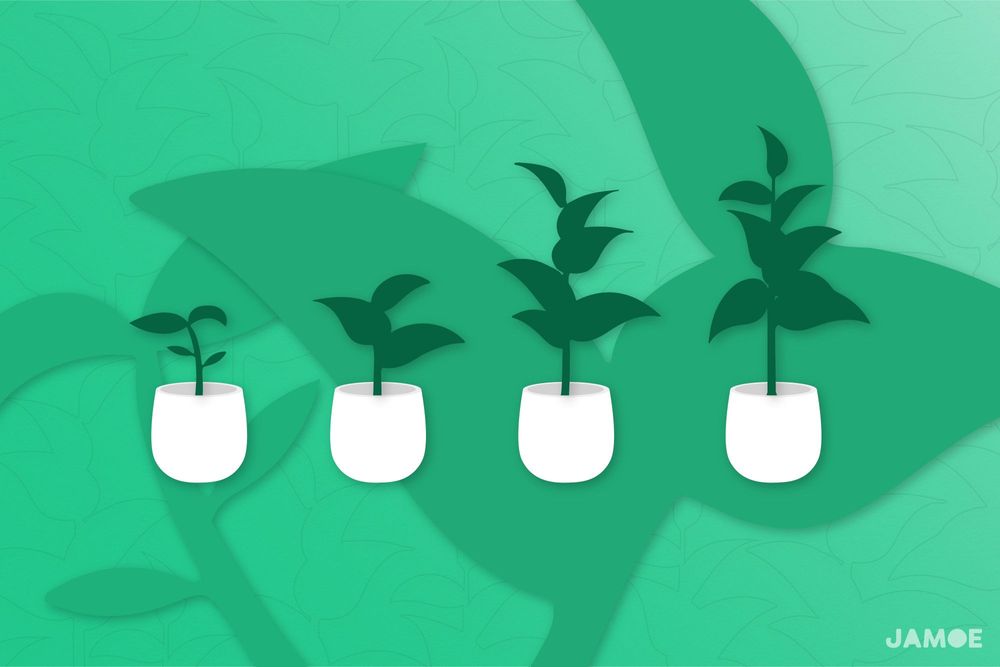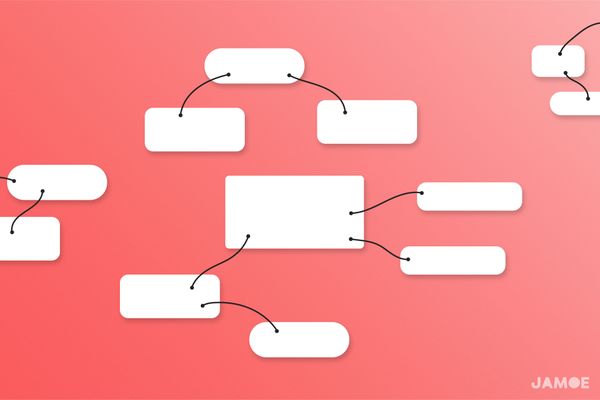The Pomodoro Technique: Getting Started With Working In Bursts
At a glance
- Based on the reader question: With lockdown, I keep procrastinating and get anxious about all the work piling up as the days go by. Do you have any recommendations for how to get started instead of feeling stuck? – Olivia, Bath, UK
- Chip away at tasks by working in 25-minute bursts with a 5-minute break between. Paralysis when juggling a lot is normal, but by working in bursts, it'll make beating the pain of procrastination easier.
- Use the technique to build up momentum that you can carry forward into tomorrow, especially when paired with Evening Pages.
- Stay mentally healthy by avoiding the Break Paradox of not knowing how to refuel when you've scheduled some time to rest. To help, you can experiment with our curation of evidence-based ideas for making the most of your recharge time.
Introduction
Burst. Break. Repeat. That's the essence of the Pomodoro Technique.
Bursts are 25 minutes. Breaks are 5 minutes.
Repeat this 4 times, and then take a 20-30 minute break.
All good mental gyms include some form of the Pomodoro technique, as it cultivates focus and beats off procrastination.[1]
We'll open with how to get started with the technique, and then share our recommended tweaks to help more seasoned practitioners.
These tweaks will look at deepening your focus, maintaining momentum, and share some uplifting suggestions for tackling the Break Paradox.
Is the Pomodoro technique a good fit for me?
The Pomodoro technique in a nutshell
- Pick a task
- Set a 25-minute timer
- Work on your task until the time is up
- Take a 5 minute break
- After 4 bursts of work, take a 20-30 minute break
What is the Pomodoro technique most valuable for?
- Strengthening your ability to concentrate for longer
- Beating off procrastination by chipping away at tasks
- Motivating yourself by turning work into a series of mini-games
Practical points for getting started
Timers
Using your phone as a timer is fine, though you may find escaping your phone's gravity an exercise of effort you'd rather avoid. That's also why we would recommend shying away from apps like Forest.
For a free web-based timer, check out Pomodoro Timer Online.
Procrastination mountains and molehills
When applying the technique to painful tasks, the team and I shared the same thought: that didn't take long at all.
The technique will help you get a better sense of proportion, as we tend to over-estimate how painful a task is, and that's why we put it off.
Celebrating your progress
Keep a tally each time you complete a burst of work. When you wrap up for the day, you'll have a double sense of achievement: seeing all the tasks you've ticked off, and the chain of tallies that testify to your sustained focus.
For a stronger visualisation of your effort, you could have two jars.
One is empty and one is full of paperclips, coins, abandoned pen lids – something small that you can transfer into the empty jar every time you finish a session.
It's a simple, but powerful way to celebrate putting in the effort.
Upgrading your Pomodoro game
If you're a seasoned Pomodoro practitioner, you'll have melded the technique into your own way of working.
From our experience, we have two callouts that have helped deepen our focus and maintain momentum when working over the long-term.
The first is using Distraction Catchers, and the second is knowing how to use your breaks effectively.
Strengthen your concentration with Distraction Catchers
As first featured in Motivation is a Myth, Distraction Catchers are our technology-free way of dodging distractions, and work especially well when used in chorus with the Pomodoro technique.
While studying or working, I keep a piece of paper and pen nearby. Whenever a thought occurs to me that isn’t related to the task at hand, I scribble it down.
Having it on paper saves it for later, so I can forget about it and return to what I was doing, which means I can maintain my momentum, and prevent my mental house of cards from falling down.
If you’re like me, your thoughts will fall across three buckets:
- Impulses: things that feel urgent and exciting, e.g. checking Twitter, brewing some tea, grabbing some olives
- Ideas: when inspiration strikes, don’t let it get away, e.g. subtitles are mini-spoilers
- Tasks: items for your to-do list, e.g. check postbox, buy birthday card for Pat, test smoke alarm battery
When I'm on my break, I can review this list, and see if any of the things I wrote still look appealing, like brewing some tea and buying a birthday card.
Studies have shown that promising yourself even a small reward at the end of a work session can help you maintain your focus.
Day dreaming has also been shown to be good for your productivity, so don't feel like a failure if your mind wanders. That's a normal part of creative thinking and problem solving.
By monitoring your attention with a Distraction Catcher, you’ll be able to spot whatever thoughts have pulled you away, and then bring yourself back to the task at hand.
Using your breaks effectively
Acknowledging the Break Paradox
What do I do now?
Society expects us to know how to spend a well-deserved break, but reality tells a different story.
In an effort to make the most of our break time, we find ourselves floundering, trying to meet the high-bar we've set ourselves to make our pitstop as productive as possible.
We want to squeeze as much juice from life's leisure-lemons as we can.
The outcome is the opposite of our intentions: we return to work with a weight of regret, either having failed to make a decision, or opting for something that neglects rather than nourishes and nurtures our spirits.
We call this the Break Paradox:
Wanting free time but when we get it, not knowing how to best invest it. The result is a feeling of wasted chances or compounding exhaustion.
Breaking the Break Paradox
First, remove the paradox's primary source of power: guilt. Despite what I used to think, some times the best thing to do is nothing.
Absolutely nothing.
In the spirit of working sustainably, we've surveyed the research to bring together some fresh break time ideas you can experiment with:
- Laughter breaks: Laughing is one of the quickest ways of elevating your mood, so having a portion of comedy gold waiting for you on your preferred social media stomping ground is the opposite of wasted time.
- (Indoor) Nature breaks. Even small reminders of nature have an impact. A study from 2016 showed that taking note of a tree at a bus stop, or the plant pot on your desk has a calming effect. So if the greater benefits of a two week forest escape aren't possible, don't weed out the possibility of just tending to whatever patches of indoor nature are around you, and catching some sunshine.
- Snack breaks: Have a groaning stomach? Nuts, olives, fruit, a boiled egg, or a cup of green tea. Something fatty or full of fibre will keep you feeling fuller for longer.
- Hygiene breaks: Instant gratification awaits. When your focus dips, the low-brain power chores of tidying your space or grooming offer a nice change of pace.
- Creative breaks: Sketching, cooking, writing. Whatever lights up your spirit. Music is also a great option, as it takes the shortest path to the soul, and can greatly shift our mood. Listening to classical music, for example, has been shown to help with relaxation.[2]
- Movement breaks: The media bombards us with sledgehammer workouts. It doesn't need to be that intense. Stretching out like a cat after a sitting session, standing up to work for a while, going for a stroll – they're all valid and valuable.
- Nothing breaks: Do nothing. Lay on the sofa, have a power nap, wander about your home and see what catches your eye. Day dreaming has been shown to have a positive impact on cognition.
It's OK to Ignore your Timer
The greatest criticism of the Pomodoro technique is that you lose all momentum by having so many breaks.
The solution is simple: do what works for you.
That can mean ignoring the timer when it signals you're due a break, or increasing the length of a working session.
That's not a sign of failing at the technique. It's a sign of surpassing the technique, and claiming it as your own.
It also makes sense if you acknowledge that complex work falls apart if you put a five minute break in the middle.
A helpful framework featured in the article on Time Boxing, a technique for balancing your time across tasks, was to think about the interruption rate of the task you're tackling, and letting that shape your approach.
The interruption rate can be expressed as:
How often can you be interrupted when solving a problem without causing your mental house of cards to collapse.
It then follows that our North Star when working in bursts is:
The lower the interruption rate of a task, the longer you'll need to make your working session
Footnotes
[1] ‘Pomodoro’ is Italian for ‘tomato’.
[2] We recommend Yiruma’s, ‘River Flows In You’. It’s has a hypnotic melody that you can listen to for hours, as you chip away at work or take a mindful break.
This article is part of the Redraft newsletter, where we answer reader questions. Submit your question here or subscribe for free.
Learn faster. Think deeper. Stress less.




